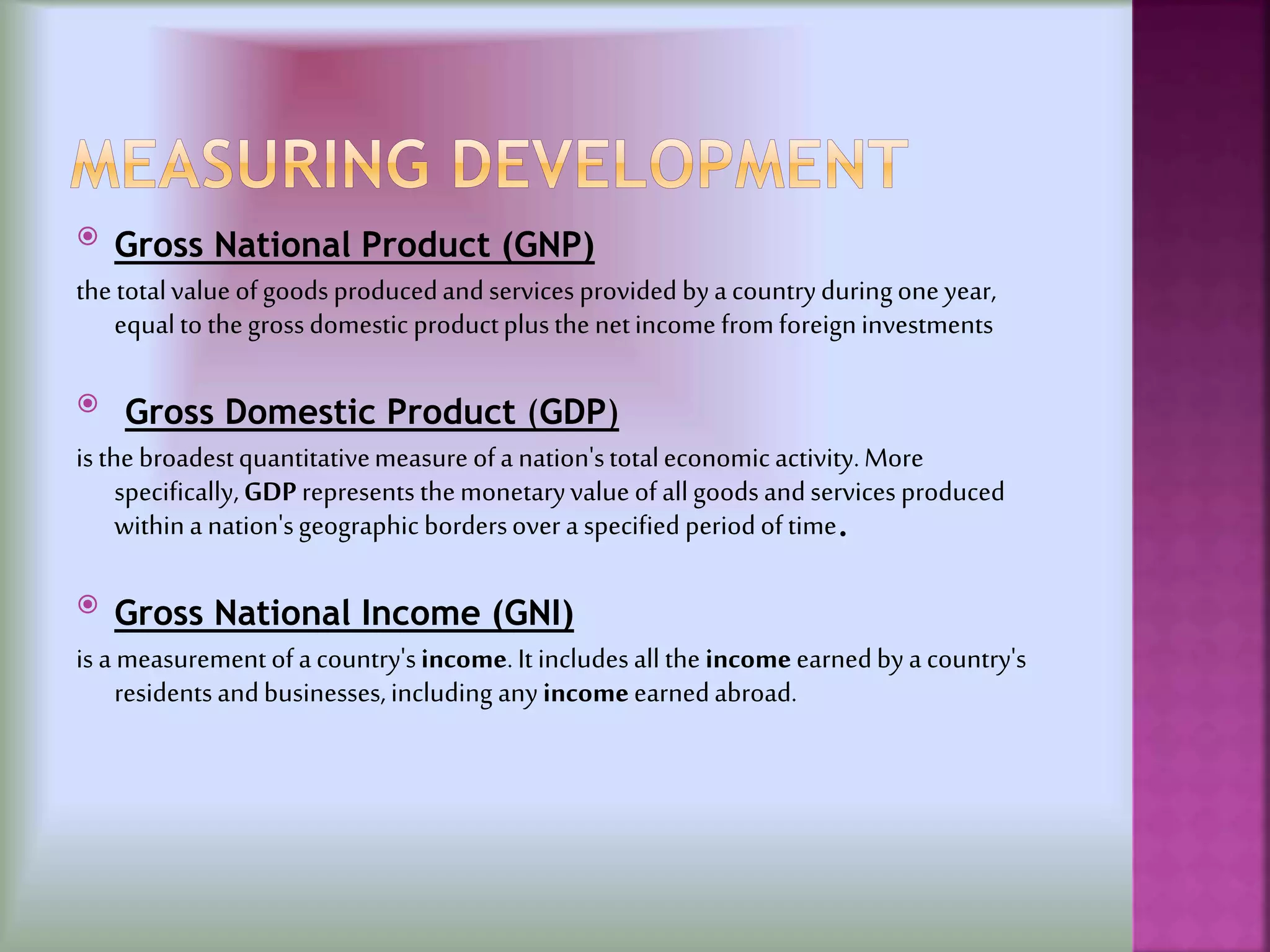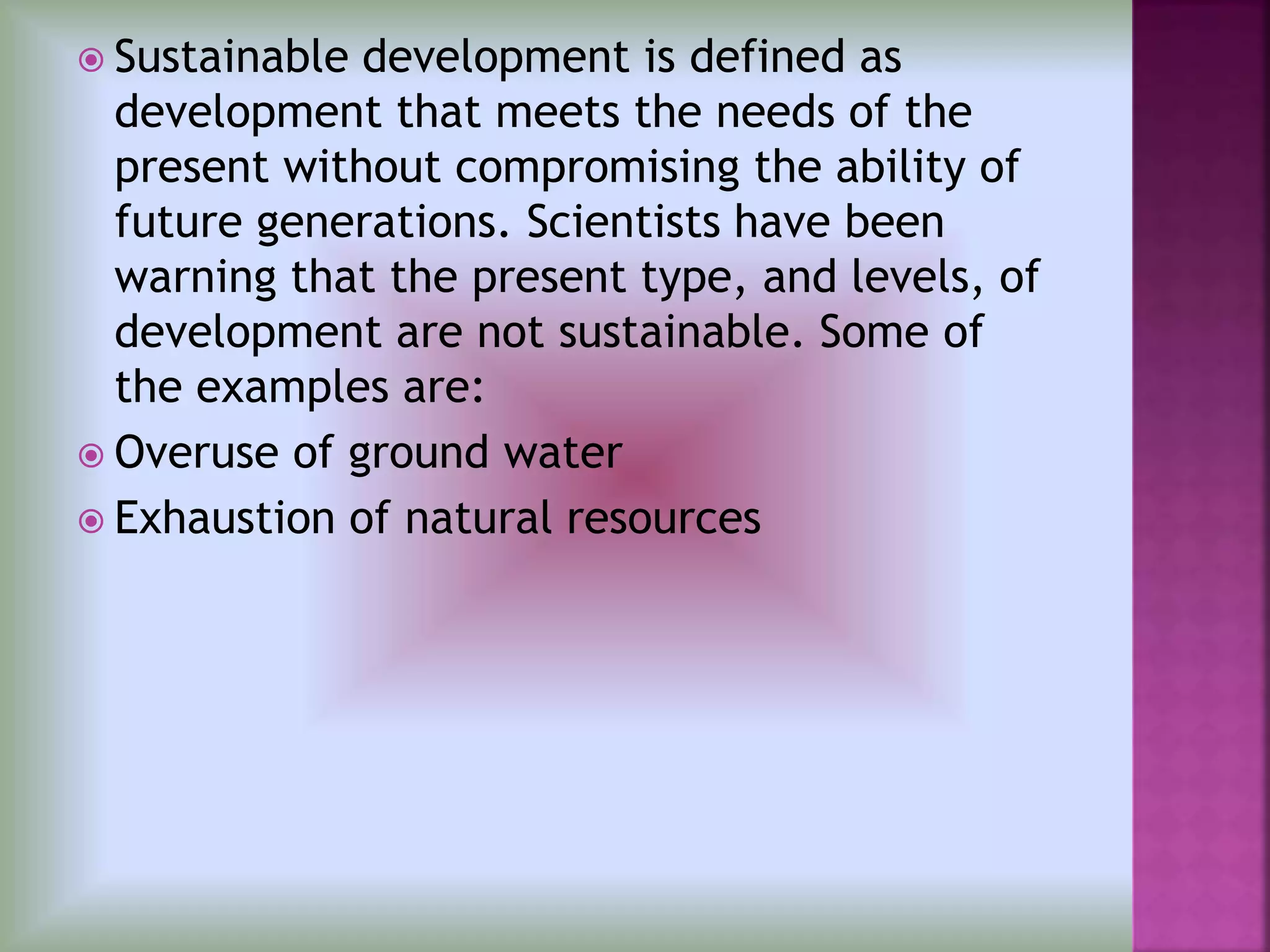Human development is defined as expanding people's freedoms and opportunities to improve well-being. It focuses on increasing people's real choices like who they become, what they do, and how they live. Key indicators of human development include health, education, income, and life expectancy. Public facilities provided by governments like infrastructure, sanitation, transportation, healthcare, and water are also significant attributes to consider when evaluating a nation or region's development beyond just average income. Sustainable development aims to meet current needs without limiting future generations' ability to meet their own needs by avoiding overuse of resources like water.

















